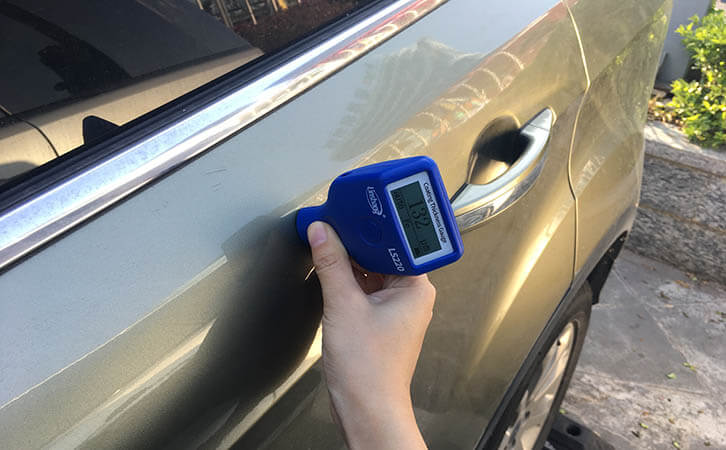Application of Anticorrosive Coatings in Automobiles
Anti-corrosion coating can be applied to various metal surfaces to prevent corrosion. In order to ensure that the thickness of the anti-corrosion coating on the car body meets the requirements of anti-corrosion, the thickness of the anti-corrosion coating needs to be measured using an anticorrosive paint film thickness gauge.
When car enthusiasts usually check their cars, if they are careful enough, they will observe that there are some oil stains or grease waxes in some areas that are not leaked by the engine. Don't worry when this happens, this is normal. These substances are usually anti-corrosion coating materials, such as those penetrated by wax injection in the cavity. There are many sheet metal in the chassis and the periphery of the cabin. The anticorrosive coating is applied to the car to make the car body better anticorrosive, which is a normal phenomenon after the car is used.
Anticorrosive coatings are important consideration when choosing a car. The thickness of the anticorrosive coating has reached a certain level, the film surface is thick enough and the performance of the car will be better. Cars with good anticorrosive coating thickness have a good performance in terms of stain resistance and corrosion resistance. According to the different anti-corrosion coating materials, it can better prevent various daily splashed liquids. Cars with a good anti-corrosion coating can also perform better in resisting radon and normal temperature repair after damage. At this stage, in order to check whether the anti-corrosion coating on the car body has reached the thickness requirements, the anticorrosive paint film thickness gauge is used to measure after the instrument is calibrated. Press the probe on the car paint surface and select the appropriate measurement mode. For more accuracy, you can take the average value after testing for multiple times.
Anticorrosive coatings also play an important role in automotive coating processes. For the car body, it is necessary to perform electrophoresis first. The electrophoretic layer is directly attached to the net body, which has anticorrosive effect on the body. It can also provide a good adhesion environment for the mid-stroke layer. A high-quality anticorrosive coating is then deposited on the metal surface of the body-in-white and then painted. Finally, check the quality and smoothness of the paint. When the thickness of the anti-corrosion coating reaches the requirements of the specification, the effect of the car body through spray painting will eventually be better. At the same time, the car will not be easily worn in future use. Anticorrosive coatings play an important role in the future maintenance and aesthetics of the car. In order to obtain the ideal anti-corrosion effect, the final thickness of the anti-corrosion coating must be tested by the anticorrosive paint film thickness gauge before it can be assembled and put into use in the next step.
Linshang anticorrosive paint film thickness gauge has high measurement accuracy, the measurement results have reached the national standard. It has a large measuring range, which can be applied to a variety of industries. In measuring the thickness of the anticorrosive coating of the car body, a Linshang anticorrosive paint film thickness gauge can be used for simple and easy operation measurement to obtain high-precision measurement results.
- High precision coating thickness gauge for used car
- Automotive paint protection films coating thickness gauge
- Plating Thickness Measuring Instrument for Detecting Anti-corrosion Coating
- Linshang LS220, LS191, LS160A– Necessary for Car Cover Inspection
- Coating Thickness Gauge for Second Hand Vehicle
- Zero Adjustment Step of Coating Thickness Gauge
